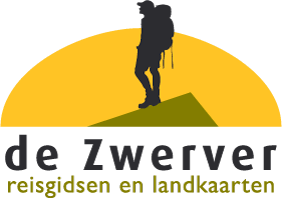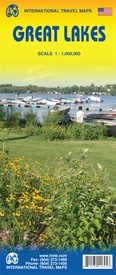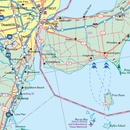To North Americans, there is only one "Great Lakes" - the waterway stretching far into the interior of the continent from the Gulf of St. Lawrence to the tip of Lake Superior. This vast region has exerted a fundamental hold on the development of both the USA and Canada; first as a canoeing trade route for trapping furs, then as a means of settlement, and now as a water route to move products to world markets. The region is also densely populated with well-known touristic cities and attractions, and houses in excess of 100,000,000 people. Surprisingly, until now, there has never been a map for this interesting and historic part of the continent. Using this map, one can explore Lakes Ontario and Erie as circular routes; also Huron and Superior; visit Ottawa and Toronto, Chicago and Duluth, and find Fort William or the Wawa Goose. This is a double-sided map covering from Ottawa in the north to Pittsburgh and Columbus in the south and Duluth and Thunder Bay in the west. Both Canada and the USA portions of the Great Lakes Region are included.
Legend Includes:
Roads by classification, Airports, Ferrie routes, States boudaries, border crossing, Time zones, State parks with or without campsites, Campsites, Wayside or Roadside parks, Hospitals, Museums, Tourist information centers, Points of interest, , Churches, Points of Interest, Waterfalls, zoos, World heritage sites, Viewpoints, Lighthouses, Hot springs, Mines and quarries, Native American reserves, Mountain peaks, Caves, Universities, Beaches, Skiing, Tennis courts, Golf courses and much more.










